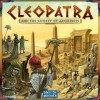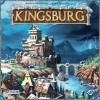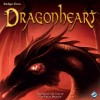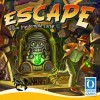
mimem
gamer level 3
992 xp
992 xp
followers
0
0
Use my invite URL to register (this will give me kudos)
https://boardgaming.com/register/?invited_by=mimem
profile badges



recent achievements

Explorer - Level 1
Earn Explorer XP to level up by completing Explorer Quests
Earn Explorer XP to level up by completing Explorer Quests

I'm a Real Player!
Claim that you have played a game today by clicking the "Played Today!" button on a game page 25 times.
Claim that you have played a game today by clicking the "Played Today!" button on a game page 25 times.

Gamer - Level 3
Earn Gamer XP to level up!
Earn Gamer XP to level up!

Novice Grader
Grade 20 more reviews or tips by clicking "Yes" or "No" in response to the question "Was this helpful?"
Grade 20 more reviews or tips by clicking "Yes" or "No" in response to the question "Was this helpful?"
Player Stats
Critic (lvl 1)
120 xp
120 xp
Explorer (lvl 1)
105 xp
105 xp
Professor (lvl 0)
45 xp
45 xp
Reporter (lvl 0)
52 xp
52 xp
About Me
mimem's Followers (0)
No Followers Yet



























































































































































In the Shadow of the Emperor
This is a game that intrigues and befuddles me in equal measure.
At it’s core, In the Shadow of the Emperor is an area control game. It shares features with the canonical area control game, El Grande, in particular its public card selection and dual use of cards. It has an income track that determines how many actions you can take. It has an election for emperor in which you can employ dirty tricks. And it has a plethora of special powers, each of which requires skill to use effectively.
Most of the mechanisms in the game are motivated by the theme. You try to gain aristocrats, arrange marriages or obtain position in the church, attract knights, and build castles and cities, ultimately hoping to gain control of electorates (the regions in the game) and the emperor’s throne. Nonetheless, the mechanisms feel quite abstract
— except when you manage to “age” (i.e. kill, probably by poison) one of your opponents off the board.
It is hard to for me to put a finger on why the game feels so abstract. I think in part it is the game board. The board is colorful and communicates a lot of information, but it looks like a medieval version of a spreadsheet. There is no map, just tracks and boxes. In addition, there are only 5 turns, so you do not really have a sense for the passage of history.
Some of the actions are hard to flesh out thematically. Are cities really being built, or are they being chartered, taxed, designated, or just allied with? How does a doctor card allow you to age a married couple by 15 years (this does not always kill them)?
The way you control regions and the way these translate into points, money, and votes are quite intricate. Each electorate has its own powers and its own distribution of influence spaces. The emperor has a different power every turn. Victory points are earned by voting for the winning candidate, but not for being him –until the next turn. Victory points are earned for taking control of electorates but not for holding them, with an exception — there are exceptions to everything.
I don’t know enough history to say whether this provides a good feel for the way the Holy Roman Emperor got his job, but it seems authentically convoluted.
The least thematic mechanism in the game is also one I find very difficult to manage in play. The special power cards you buy come in two colors, blue and pink. Whichever color you have more of at the end of the turn determines whether you give birth to a daughter or son on the next turn. (Apparently “pink for girls” and “blue for boys” is not a medieval concept; I recently read that the idea belongs to the latter half of the 20th century.) Girls and boys have different uses in the game, and it can be hard to balance, for example, one’s desire for a girl with the unrelated actions that the cards give.
Despite having played this game several times, mostly online, I can’t say that I understand it. The game seems balanced, but due to the many details skill can come only with practice. This is a gamer’s game, but not this gamer’s game.